Discover the heart and soul of Querétaro, a region often overshadowed by its neighboring cities but brimming with rich history, vibrant traditions, and delicious flavors. Nestled in the foothills of the Sierra Madre Oriental mountains, Querétaro offers a unique blend of indigenous heritage and colonial influence, making it a fascinating destination for those seeking to uncover Mexico’s hidden gems. From its colorful festivals to its iconic cuisine, Querétaro awaits to captivate your senses and leave you with lasting memories. Whether you’re a history enthusiast, a food lover, or simply curious about Mexico’s cultural diversity, this guide will take you on a journey through Querétaro’s local culture, revealing its treasures and charm like never before.
Key Takeaways
- Experience Querétaro’s Unique Cultural Heritage: Immerse yourself in a blend of rich history, vibrant festivals, and artistic expression that sets Querétaro apart.
- Discover Rich History and Colonial Architecture: Explore UNESCO-listed sites and historic buildings that showcase Querétaro’s colonial past and global trade significance.
- Celebrate Vibrant Festivals and Traditions: Join colorful events like the Skeleton Festival and traditional dances that honor local culture and history.
- Savor Querétaro’s Culinary Delights: Enjoy diverse cuisine, from traditional dishes to innovative fusion foods, in a thriving food scene.
- Witness Neighboring Influences While Maintaining Uniqueness: Experience cultural exchanges with neighboring regions while enjoying Querétaro’s distinct identity.
- Relive Religious Devotion: Participate in festivals and traditions deeply rooted in Catholicism, reflecting Querétaro’s strong spiritual heritage.
- Delve Into Historical Significance: Learn about Querétaro’s founding and its pivotal role in Mexican history through its rich tapestry of events and figures.
- Admire Iconic Architecture: Marvel at Baroque-style buildings and landmarks that highlight the city’s artistic and historical legacy.
- Explore Culinary Diversity: From street food to gourmet dining, Querétaro offers a culinary journey waiting to be experienced.
- Understand Local Customs and Beliefs: Gain insights into daily life and traditions that define Querétaro’s vibrant culture.
- Attend Major Festivals: Don’t miss events like the Querétaro International Film Festival and Charreadas, offering unique cultural experiences.
- Live Like a Local: Feel the warmth of Querétaro’s community spirit and enjoy its perfect balance of tradition and modernity.
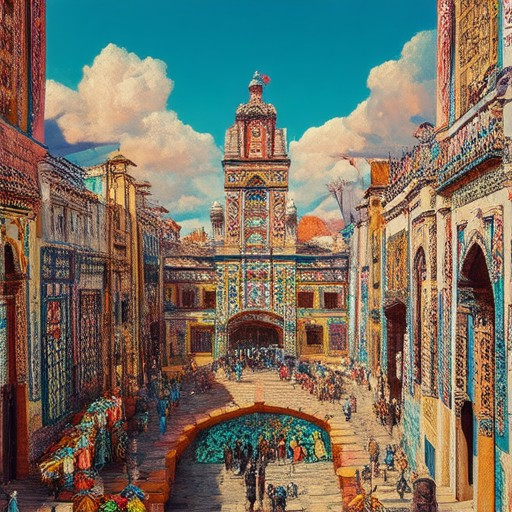
Traditional Dishes and Foods Popular in Querétaro
Querétaro is renowned for its rich culinary heritage, offering a variety of traditional dishes that reflect the region’s history and culture. Here are some of the most popular foods you must try:
- Mole Poblano : A iconic dish featuring tender pieces of pork in a rich, complex sauce made with chocolate, chili peppers, and various spices. It’s considered one of Mexico’s national treasures.
- Pozole Rojo : A hearty stew made with pork, hominy, and a red chili broth. It’s often served with cornbread and pickled onions for added flavor.
- Tacos de Pastor : Juicy tacos filled with marinated pork, caramelized onions, and fresh cilantro. These are a staple at local street food vendors and festivals.
- Elotes : Grilled corn on the cob slathered with butter, mayonnaise, and cheese. It’s a beloved snack that’s hard to resist.
- Tortas : Delicious sandwiches filled with meats like carnitas, tinga, or pastor, along with pickled vegetables and sauces. They’re perfect for a quick meal or late-night snack.
Cultural Significance of Querétaro Cuisine
Querétaro’s food is deeply rooted in its history and traditions. The state’s cuisine reflects influences from indigenous cultures, Spanish colonizers, and regional ingredients. Festivals like Fiesta de los Patos and Feria Nacional de Querétaro showcase the local specialties, drawing food enthusiasts from all over.
Don’t miss visiting local markets such as El Mercado de las Artesanas to experience authentic dishes and connect with passionate chefs and food producers who take pride in preserving these traditions.
Aqui Es Querétaro invites you to embark on a culinary journey through Querétaro, where every bite tells a story of history, passion, and tradition. Explore these dishes and immerse yourself in the vibrant culture that makes this region unique.
Experience Querétaro’s Rich Local Culture and Traditions
Querétaro offers a vibrant tapestry of cultural experiences that blend history, tradition, and modernity. Here are the best places to immerse yourself in its unique heritage:
- Aqueduct of Silao – A iconic symbol of Querétaro, this stunning aqueduct showcases the city’s colonial charm and is often the setting for local festivals and gatherings.
- State Library of Querétaro – Home to fascinating exhibits and cultural events, this library is a hub for art, history, and literature enthusiasts.
- Charreadas Festival – Celebrate Querétaro’s cowboy culture at this traditional Mexican rodeo, featuring charros, mariachi music, and Mexican folk dances.
- Culinary Delights – Indulge in Querétaro’s unique cuisine at local markets like Tienda 3B . Don’t miss dishes like “Tacos de Día de los Muertos” during the annual celebration.
- Museum of Mexican Art – Explore a collection of pre-Columbian artifacts and contemporary Mexican art to gain insight into the region’s rich cultural legacy.
- Shrine of Our Lady of Guadalupe – A revered religious site and cultural landmark, this shrine attracts pilgrims and visitors seeking spiritual enrichment.
- Teatro de la Ciudad – Attend plays, concerts, and cultural performances that highlight Querétaro’s artistic scene and traditional customs.
These destinations offer a gateway to understanding Querétaro’s soul, from its historical landmarks to its lively festivals and diverse culinary offerings. Plan your visit to experience the city’s unique blend of tradition and modernity firsthand!
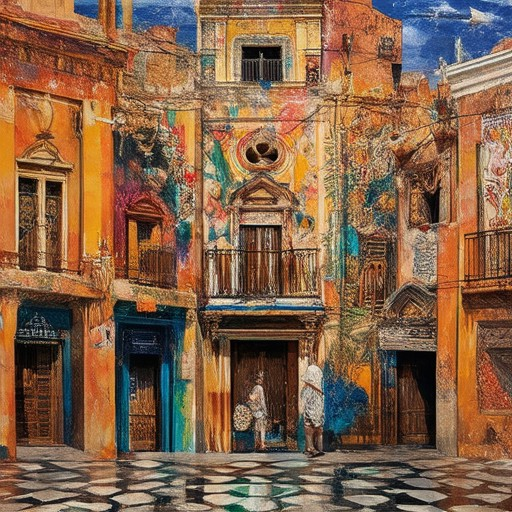
What Defines Querétaro’s Rich Local Culture and Traditions?
Querétaro’s culture is a vibrant blend of indigenous heritage, colonial influences, and modern creativity. At its core, the essence of Querétaro’s traditions lies in its deep-rooted history, artistic expressions, and communal celebrations. Here are the key elements that define its unique cultural identity:
Festivals and Celebrations
The city is renowned for its lively festivals, which often combine religious, cultural, and local traditions. Some of the most notable events include:
- Candlemas Festival: A colorful celebration marking the beginning of Lent, featuring elaborate altars decorated with flowers and candles.
- Day of the Dead: A poignant yet joyful tradition honoring deceased loved ones through vibrant skull decorations and traditional foods.
- Christmas Celebrations: Querétaro’s Christmas season is particularly magical, with beautiful displays of lights and festive markets.
Traditional Music and Dance
Querétaro’s cultural scene thrives with traditional music and dance forms that reflect its diverse heritage. The city is home to:
- Mariachi Bands: Iconic street musicians who play a central role in local festivities, blending Mexican folk music with contemporary styles.
- Dance Performances: Traditional dances like the “Jarabe” and “Fandango” are often seen during festivals, showcasing the region’s Indigenous roots.
Cuisine and Gastronomy
Food plays a significant role in Querétaro’s culture, offering a taste of its rich history. The region is famous for:
- Tacos Al Pastor: A popular dish featuring tender pork meat slow-cooked in a pit, served on soft corn tortillas with toppings.
- Elote: Grilled corn on the cob slathered with butter, cheese, and chili, a beloved street food.
- Breads and Pastries: Unique creations like “Biscuits” and “Empanadas” add to the culinary delights.
Colonial Architecture
Querétaro’s historic center is a UNESCO World Heritage site, characterized by its stunning colonial buildings. The city’s architecture reflects its Spanish colonial past, with:
- Baroque Style: Distinctive features like intricate stone carvings and ornate facades dominate the streetscape.
- Plazas and Cathedrals: Beautiful plazas and churches, such as the impressive Cathedral of Querétaro, highlight the city’s religious heritage.
Handcrafts and Art
Local artisans contribute significantly to Querétaro’s cultural landscape, producing:
- Pottery: Handcrafted pottery and ceramic goods, often decorated with traditional geometric patterns.
- Textiles: Colorful woven blankets and clothing made from natural fibers, reflecting Indigenous weaving techniques.
- Woodcarving: Intricate woodcarving art that showcases the skill of local craftsmen.
Community and Social Traditions
Querétaro’s culture is deeply community-oriented, with a strong sense of belonging among its residents. Traditional practices like:
- Family Gatherings: Regular meetings to celebrate important occasions and share meals.
- Local Markets: Vibrant markets where residents buy fresh produce and handmade goods, preserving centuries-old trading traditions.
Neighboring Regions’ Influence
While Querétaro has a unique charm, its culture is also influenced by neighboring states like Guanajuato and Michoacán. These influences enrich its traditions, making Querétaro a fascinating blend of regional cultures.
Explore more about Querétaro’s culture by visiting Aqui Es Querétaro , your ultimate guide to experiencing the city’s rich heritage and traditions firsthand.

What Makes Querétaro’s Local Culture Unique?
Querétaro’s local culture is a vibrant blend of tradition, history, and modernity that sets it apart from other regions in Mexico. Here are some key aspects that make Querétaro’s culture unique:
- Rich History and Colonial Architecture :
Querétaro is renowned for its well-preserved colonial architecture, particularly its Baroque-style buildings. The city’s historic center, declared a UNESCO World Heritage Site in 1996, features stunning churches, plazas, and palaces that reflect its rich colonial past. This architectural heritage is a testament to Querétaro’s significance during the Spanish conquest and its role as a key trade hub in the 18th century. - Cultural Festivals and Traditions :
Querétaro hosts a variety of colorful festivals and traditions throughout the year. One of the most notable is the “Festival de las Calaveras” (Skeleton Festival), held annually in November. This lively celebration honors deceased loved ones with elaborate skeleton decorations and vibrant street parties. Another highlight is the “Guelaguetztl” dance, a traditional Aztec ritual that dates back to pre-Columbian times. - Artistic Expression :
The culture of Querétaro thrives in its artistic expression, particularly in its music, literature, and visual arts. The city is home to numerous galleries, museums, and cultural institutions that showcase local talent. Traditional music genres like “jarocho” and “son jarocho” are deeply rooted in Querétaro’s heritage, often performed during festivals and community gatherings. - Culinary Delights :
Querétaro’s cuisine offers a unique flavor profile influenced by indigenous, Spanish, and international influences. Popular dishes include “tacos de pastor” (spit-roasted pork tacos) and “empanadas de los Santos” (a type of filled empanada traditionally eaten during Holy Week). The city’s food scene is diverse, blending traditional markets with modern dining options, making it a food lover’s paradise. - Influence of Neighboring Cultures :
While Querétaro maintains its distinct identity, its culture is also influenced by neighboring regions. The proximity to Jalisco and Michoacán allows for cultural exchanges, particularly in terms of art, music, and culinary practices. However, Querétaro’s unique blend of these influences creates a cultural landscape that is distinctly its own. - Religious Devotion :
Religion plays a central role in Querétaro’s culture, with many festivals and traditions centered around Catholicism. The city’s strong religious identity is reflected in its numerous churches and the dedication of its people to traditional rituals and celebrations.
For more information on Querétaro’s culture, including its historical sites, festivals, and culinary offerings, visit Aqui Es Querétaro .
What Should a Comprehensive Guide to Querétaro’s Local Culture Include?
A comprehensive guide to Querétaro’s local culture should cover a variety of aspects to give readers a well-rounded understanding of the city’s unique heritage. Here’s what such a guide should include:
- History and Background: Explore Querétaro’s rich history, from its indigenous origins to its colonial past and modern development. Highlight key historical figures, events, and the influence of different cultures that shaped the city over time.
- Architecture: Detail the city’s iconic architectural styles, including Baroque, Neoclassical, and contemporary designs. Mention famous landmarks like the Aqui Es Querétaro Aqueduct and other notable buildings.
- Cuisine: Dive into Querétaro’s gastronomy, featuring traditional dishes like pozole , tacos , and empanadas . Provide recommendations for restaurants and street food spots, as well as information about local markets like Mercado de las Artesas .
- Traditional Customs and Beliefs: Discuss local traditions, festivals, and customs that reflect Querétaro’s cultural identity. Explain the significance of holidays like Día de los Muertos and how they are celebrated in the city.
- Festivals and Events: List major annual events, such as the Querétaro International Film Festival and the Charreadas, which showcase Mexican rodeos and traditional attire.
- Daily Life and Lifestyle: Offer insights into the everyday lives of Querétarans, including their work ethics, family values, and hobbies. Highlight how the city balances its traditional charm with modern amenities.
By covering these areas, a guide to Querétaro’s local culture will provide visitors and locals alike with a deep appreciation of the city’s heritage and what makes it uniquely special. From its rich history to its vibrant food scene, Querétaro offers a cultural experience that is truly unforgettable.
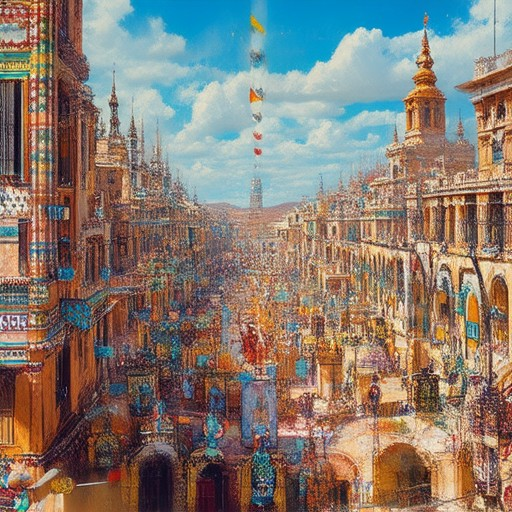
What Should a Comprehensive Guide to Querétaro’s Local Culture Include?
A comprehensive guide to Querétaro’s local culture should cover a diverse range of aspects to fully capture the essence of this vibrant city. Here’s what such a guide should include:
1. History and Heritage
Querétaro is rich in history, having been founded in 1550 and serving as a key center during the colonial era. The guide should detail the city’s founding, its role as a cultural hub, and notable historical figures like Ignacio Allende, a prominent leader in Mexican independence movements. It should also discuss the city’s evolution and its significance in modern Mexican history.
2. Architecture
Querétaro is renowned for its stunning Baroque-style architecture, featuring intricate designs and vibrant colors. The guide should highlight iconic buildings such as the State Government Building, the Church of St. Francis, and the ex-convent of St. Mark. Discussing the architectural styles, influences, and unique characteristics of these structures will provide readers with a deeper appreciation for the city’s design.
3. Cuisine
Querétaro’s gastronomy is a must-include. The guide should feature traditional dishes like “El Charrito” and “Tacos de Pastor,” along with recipes for local specialties. It should also provide recommendations for restaurants and taquerias, possibly linking to a map of the city’s top food spots. Additionally, the guide should mention the city’s culinary scene beyond tacos, highlighting its international offerings and fusion cuisines.
4. Traditions and Customs
Exploring Querétaro’s traditions and customs will give readers insight into daily life. The guide should cover common practices such as family gatherings, religious celebrations, and local festivals. It should also delve into the city’s unique sayings and expressions, offering a linguistic perspective on its culture. Including quotes or proverbs can add a personal touch to the guide.
5. Festivals and Events
Querétaro hosts a variety of festivals throughout the year, many rooted in religious traditions. The guide should highlight major events like the “Fiesta de los Patos” and “Festival de la Luz,” detailing what they celebrate, when they occur, and how visitors can participate. Providing dates and event locations will be helpful for planning trips.
6. Daily Life
To truly understand Querétaro’s culture, the guide should describe the city’s day-to-day life. This includes the work ethic, community spirit, and social norms of its residents. Highlighting local markets, public spaces, and recreational activities will give readers a sense of the city’s atmosphere and its role as a lively urban center.
The guide should conclude by encouraging readers to explore Querétaro’s culture firsthand, emphasizing the city’s uniqueness and the opportunities it offers to connect with its heritage. By covering these aspects, the guide will provide a holistic view of Querétaro’s local culture, appealing to both visitors and residents alike.

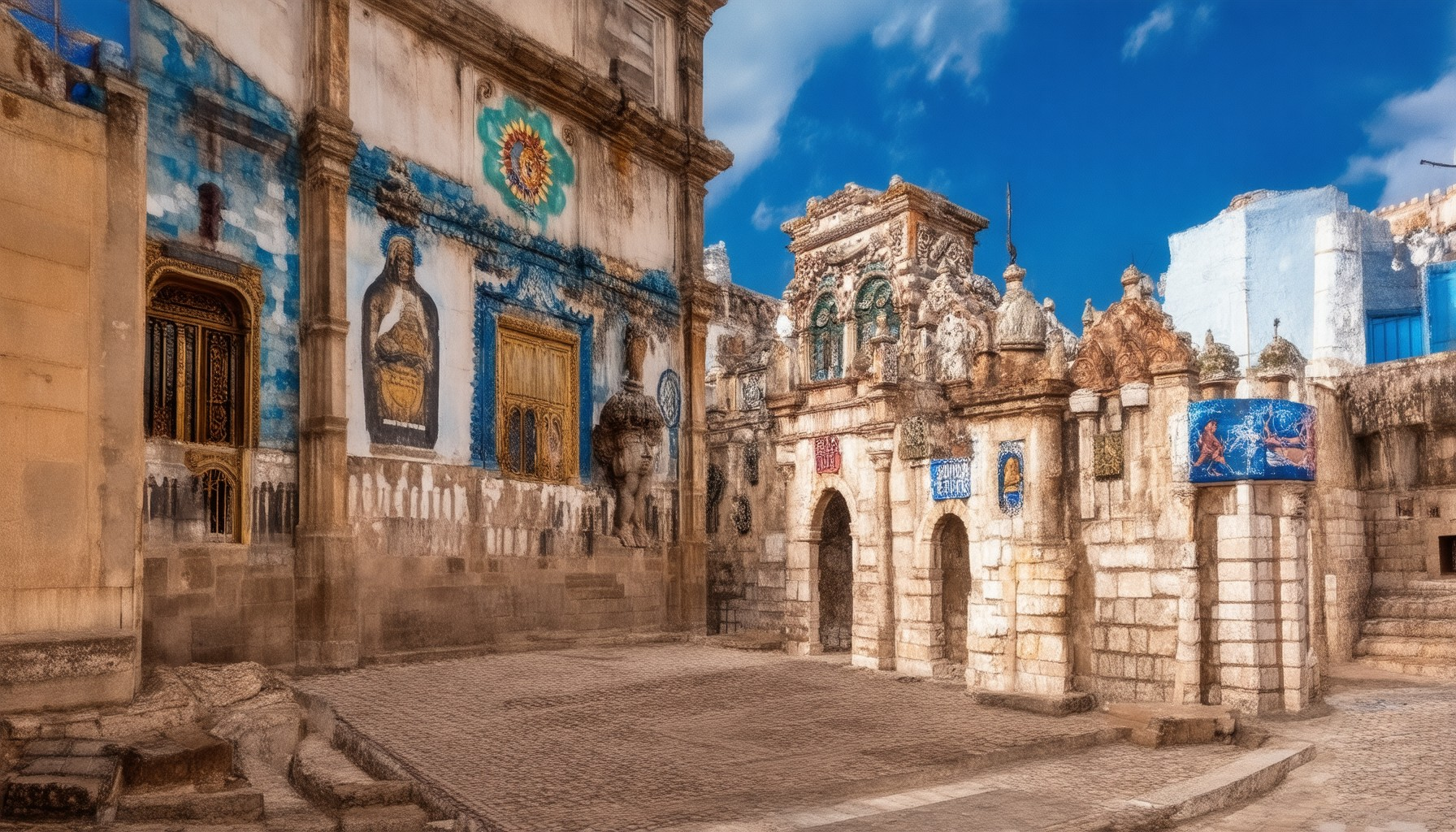
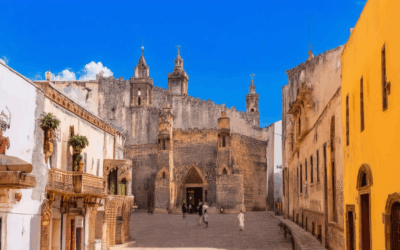
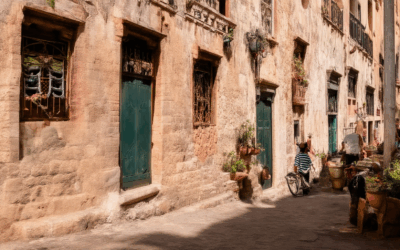

0 Comments